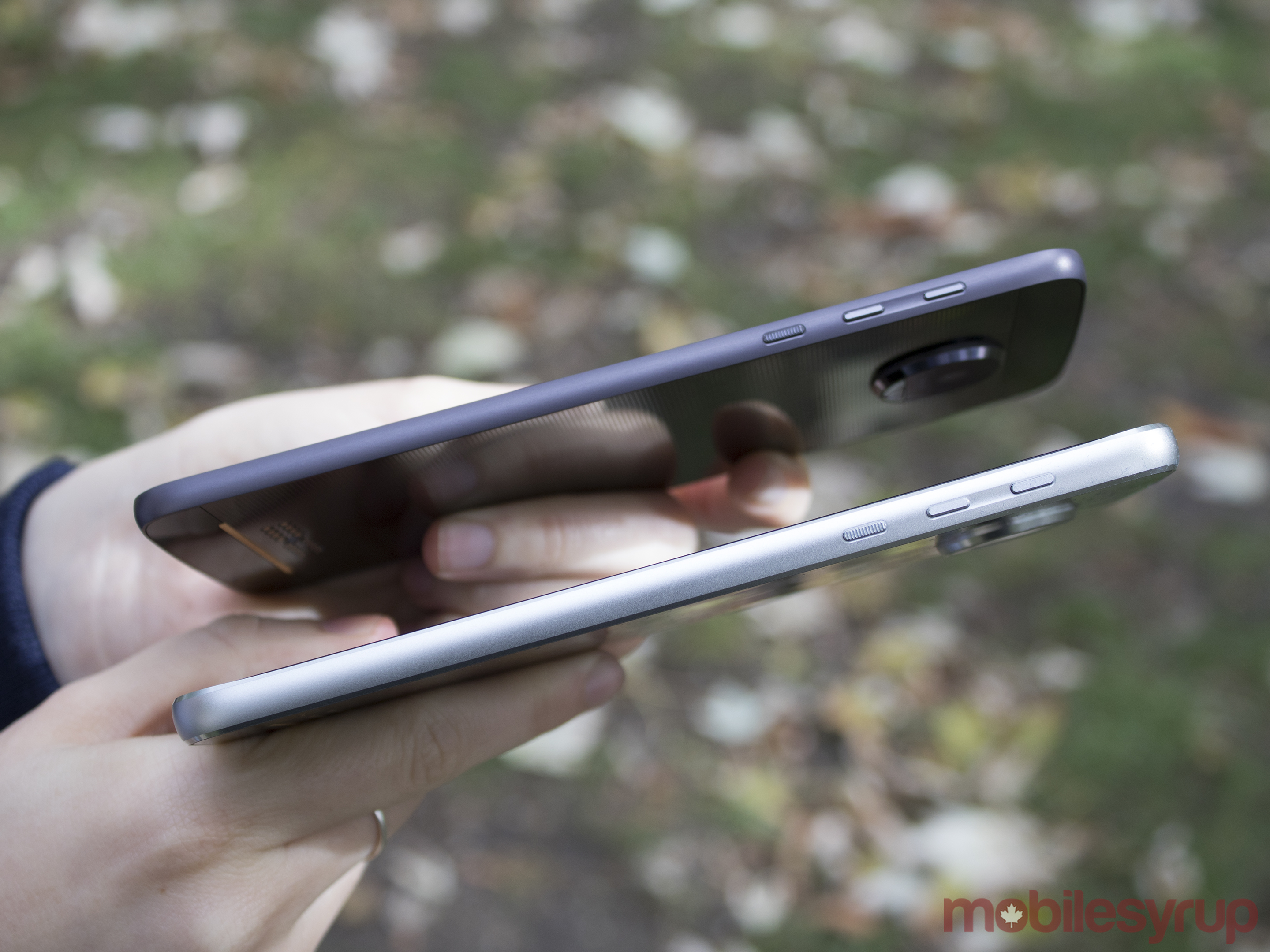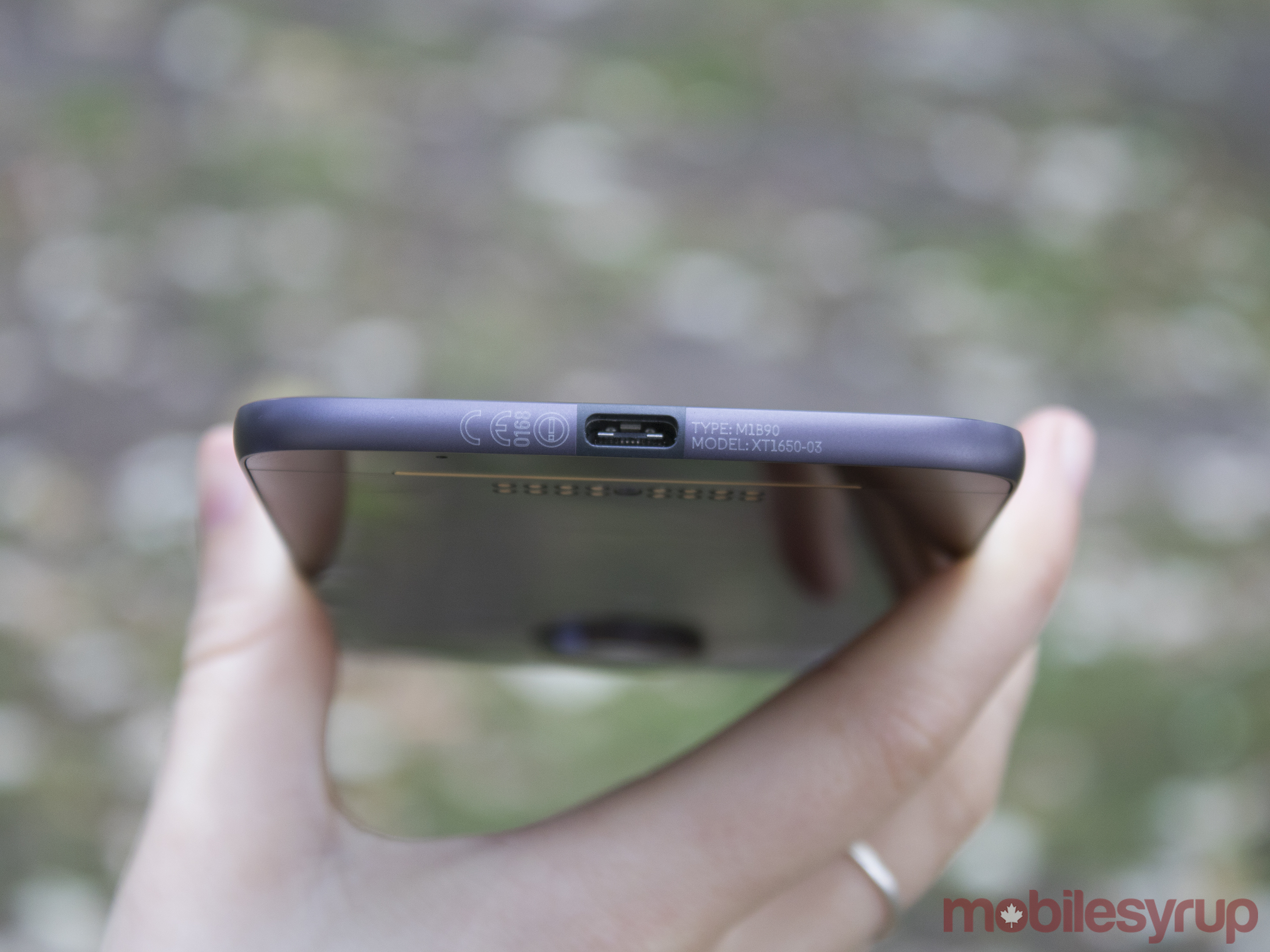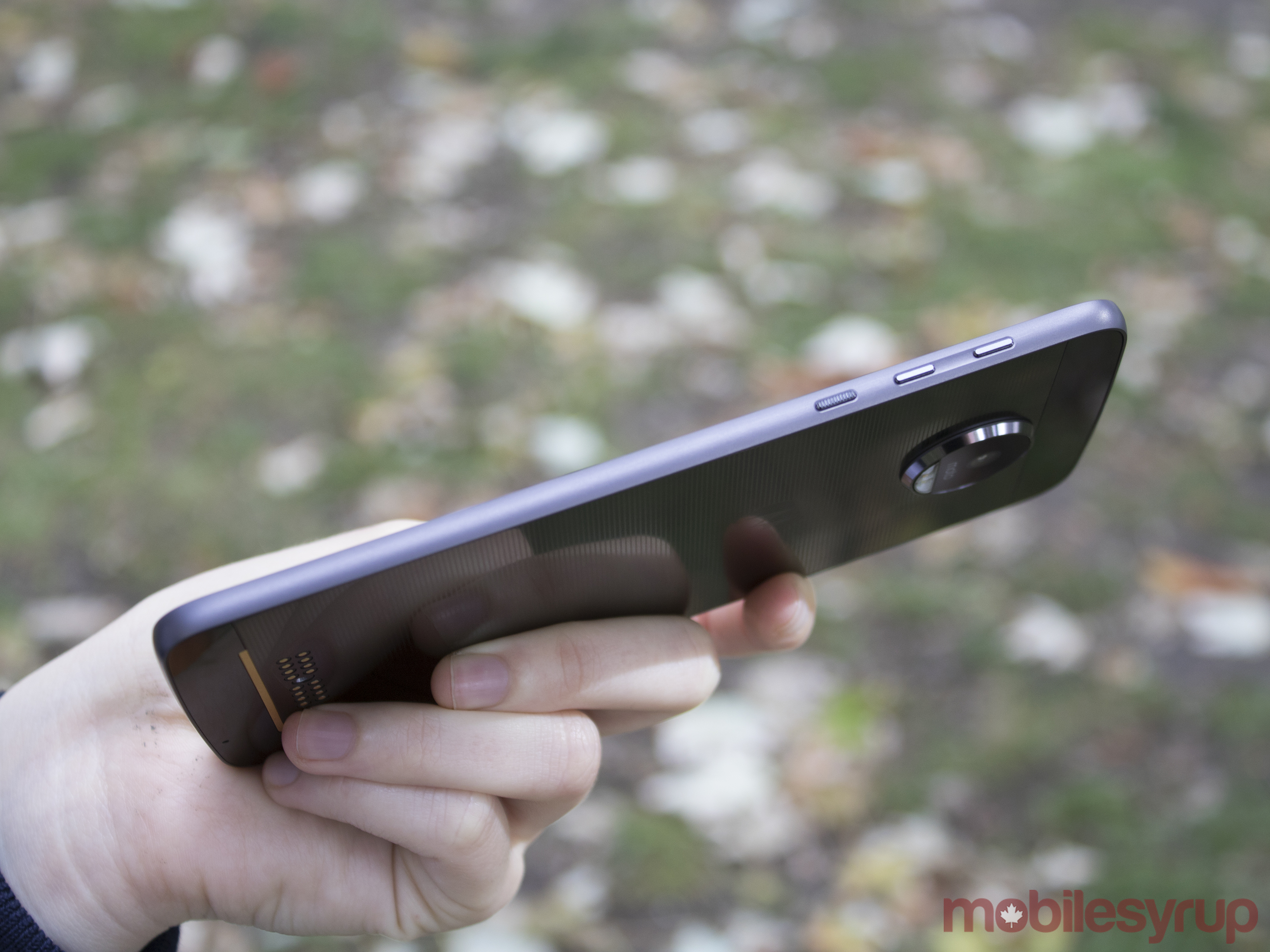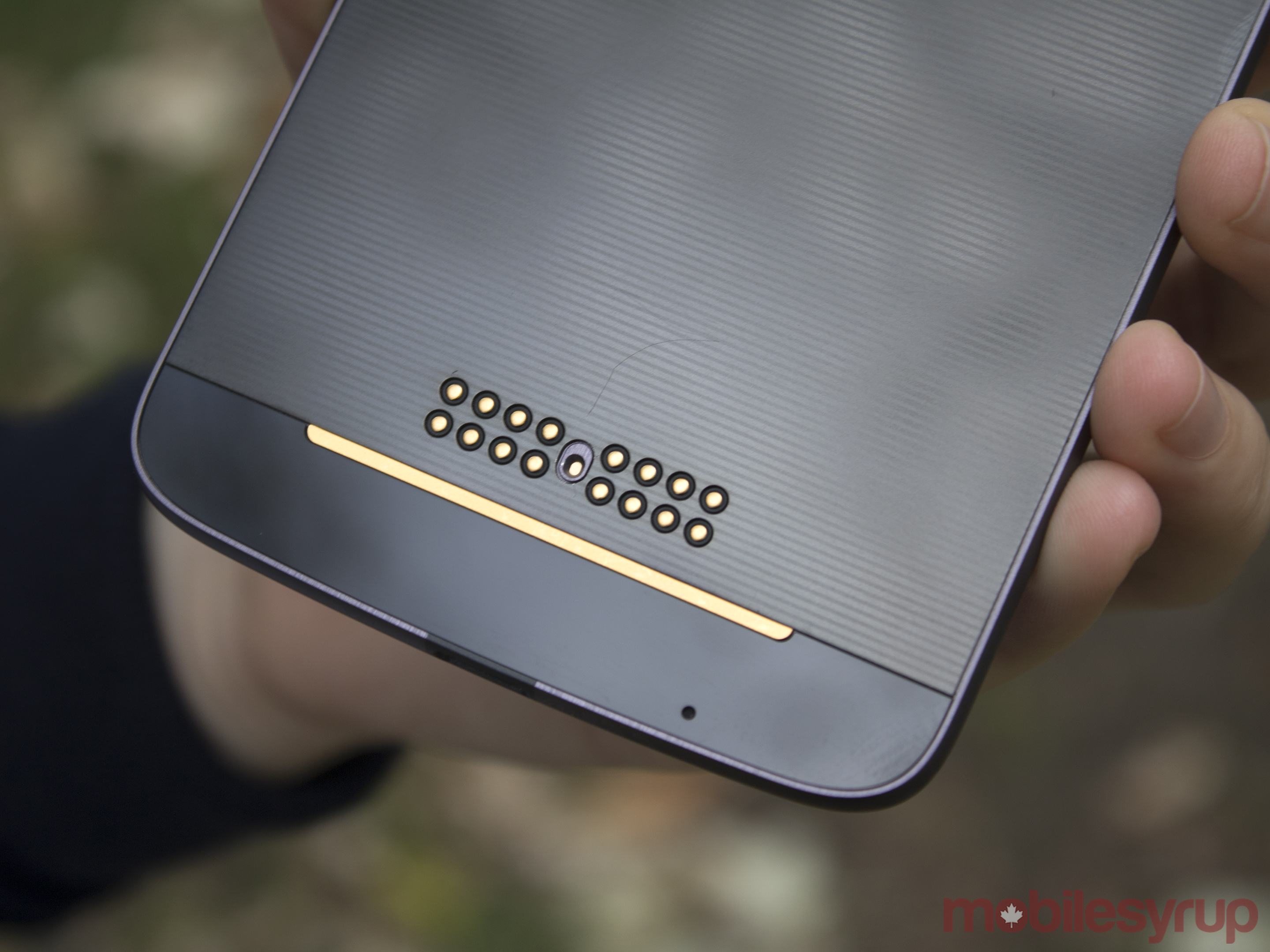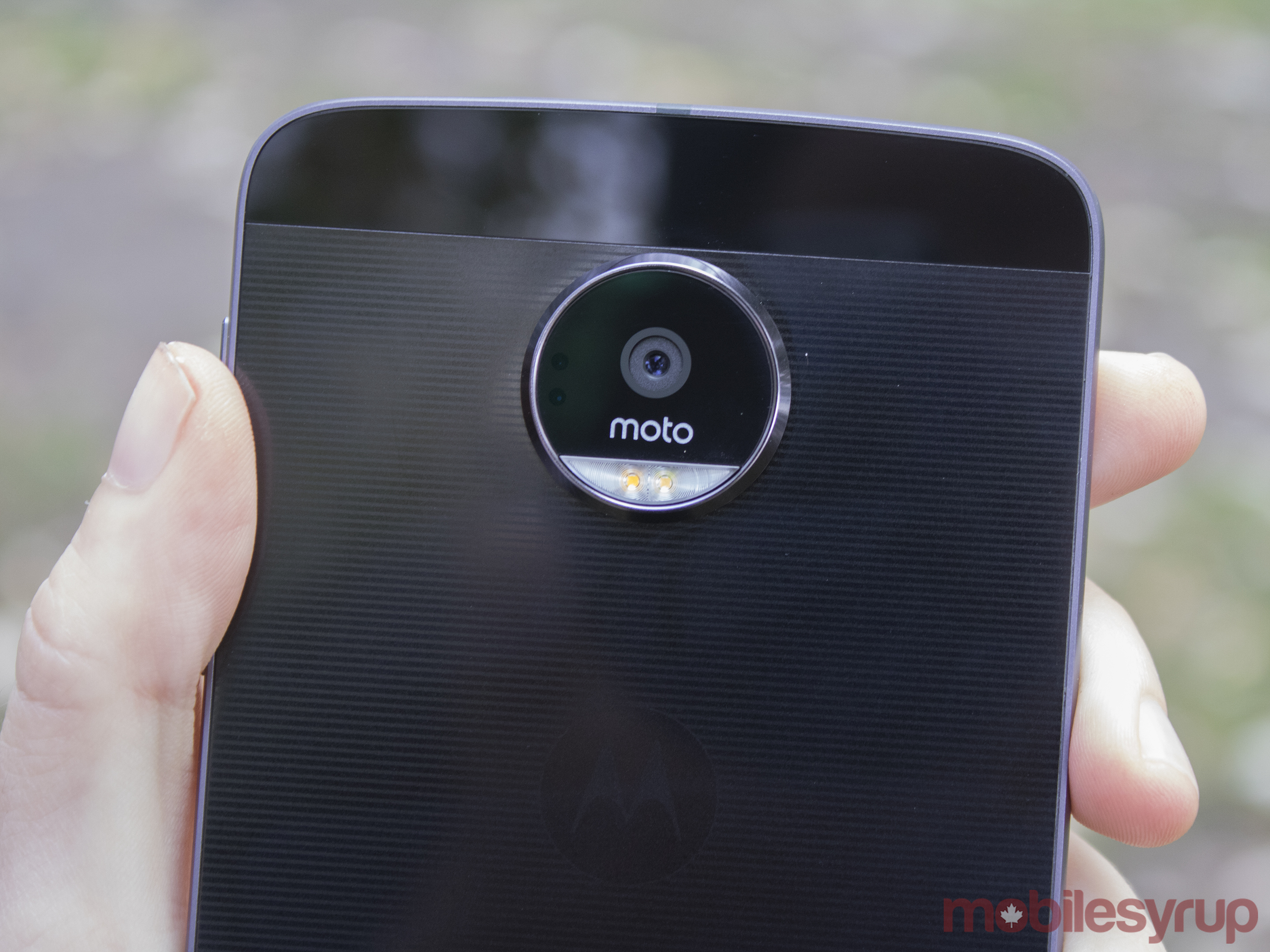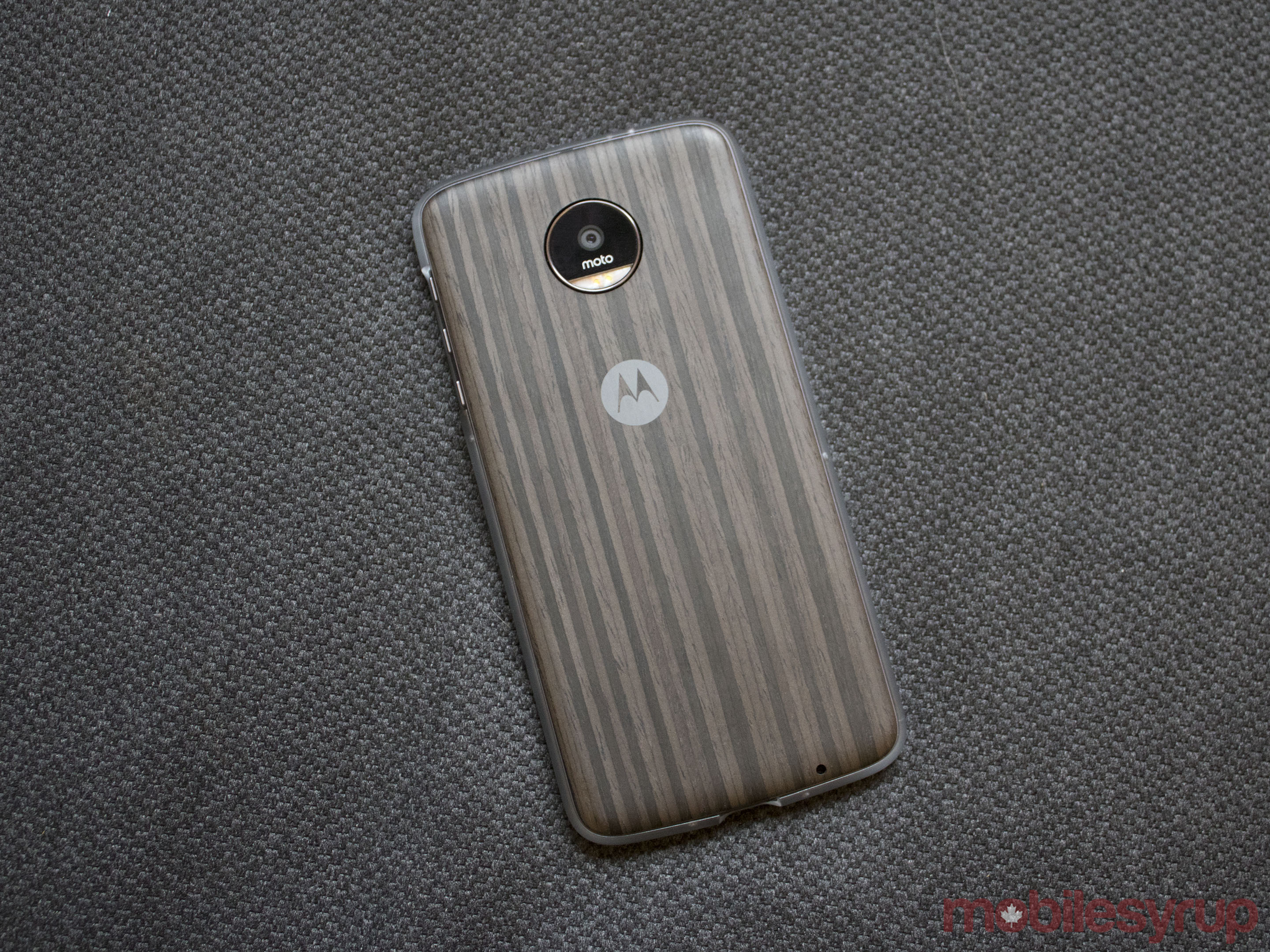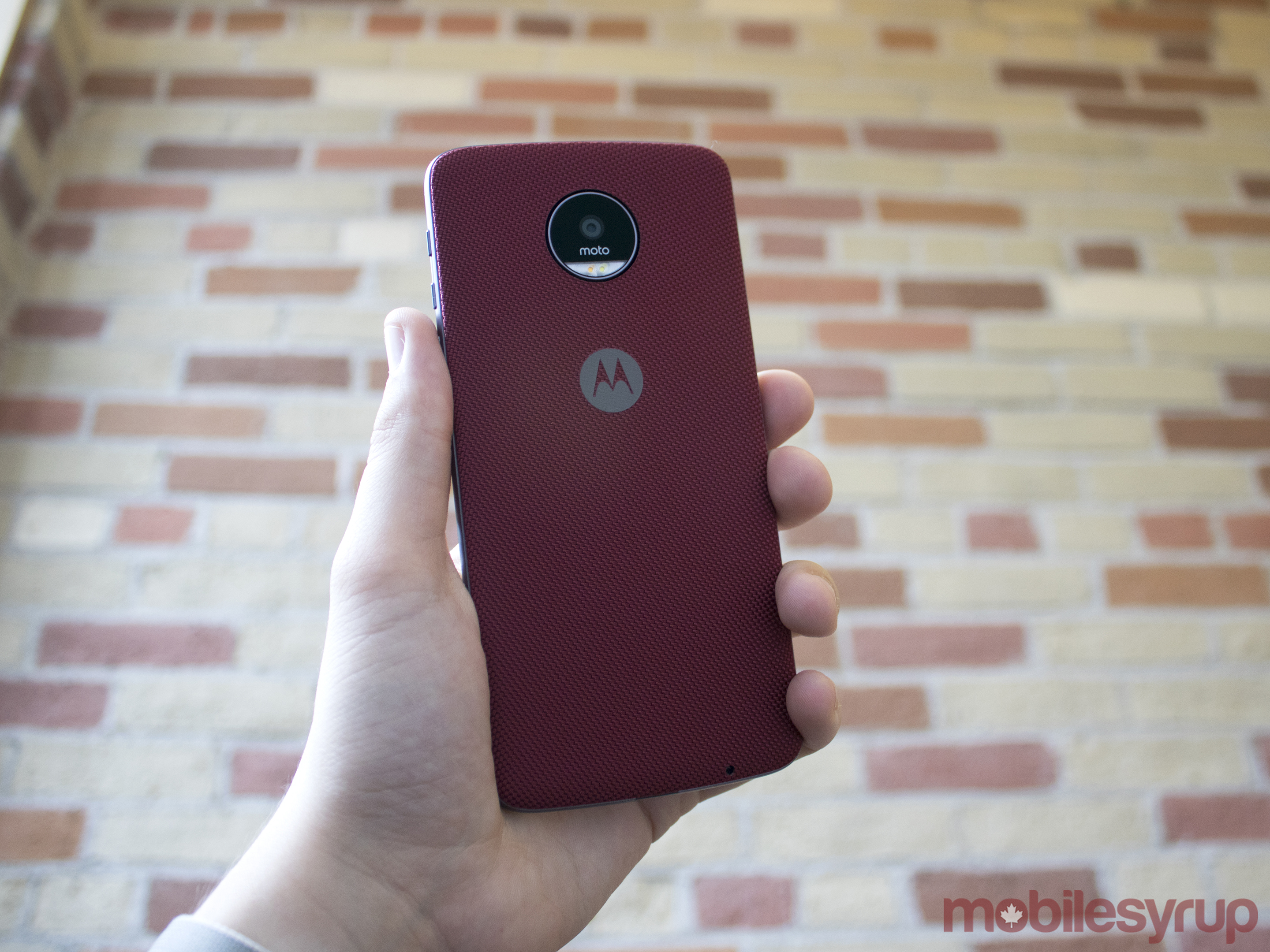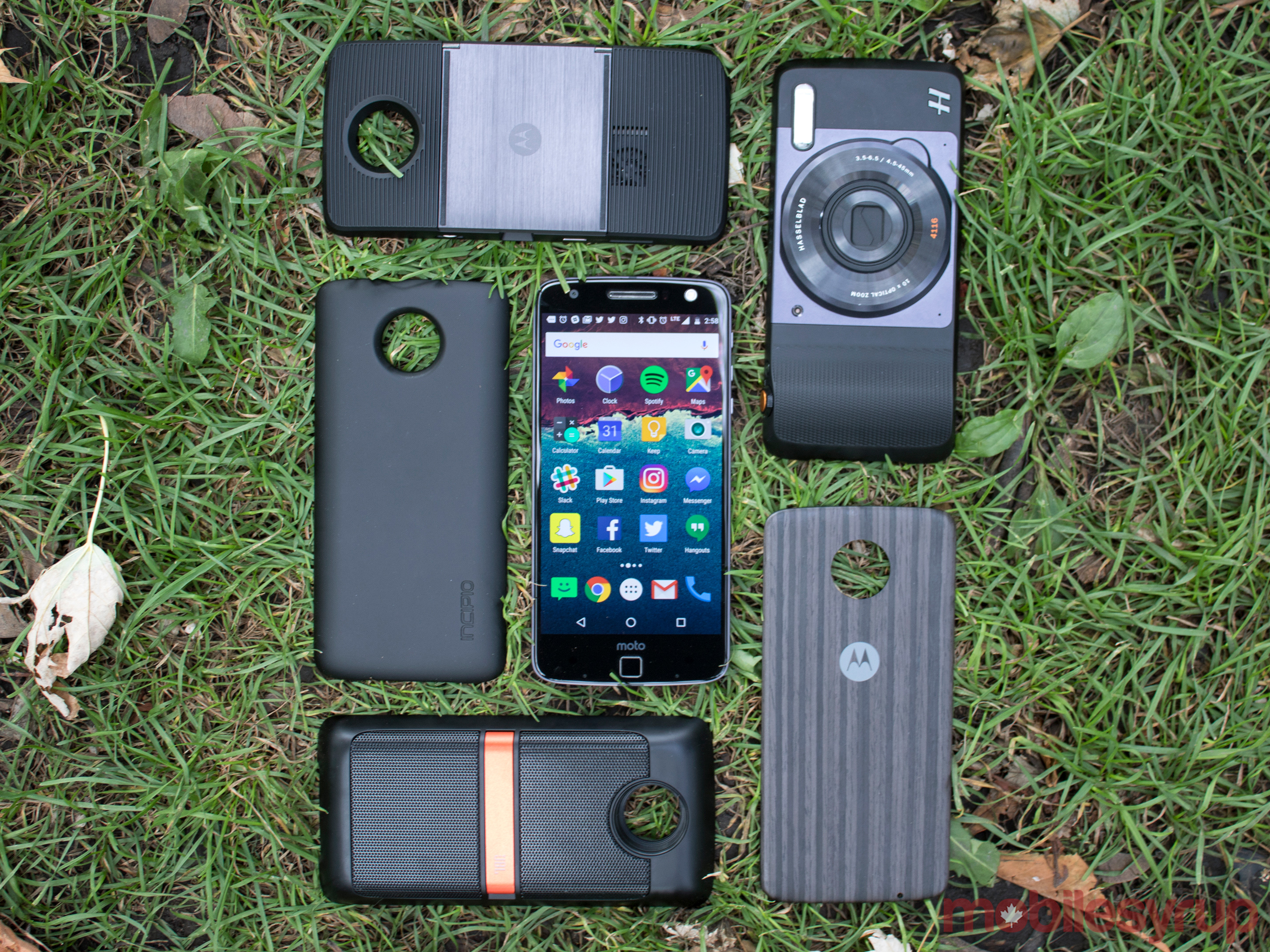
Back in 2009, Motorola released the Milestone, one of the first truly compelling Android smartphones. Since then, the historic tech company has seen its share of highs and lows.
For the most part, the intervening years have not been kind to the company, but here now is Motorola, now under the ownership of Lenovo, with one of its most interesting phones to date, the Moto Z.
Like the LG G5 before it, the Moto Z posits that modular smartphones are the future. The approach, however, is different. With the Moto Z, users don’t need to turn off their smartphone anytime they wish to add a mod.
Instead, they simply snap anyone of a number of Moto Mods onto the back of the phone and continue using their device. The question is whether that makes the underlying smartphone any better.
Let’s find out.
Specs
- Android 6.0.1, Marshmallow
- Qualcomm Snapdragon 820 processor with 1.8 GHz Quad-core CPU and Adreno 530 GPU
- 5.5-inch AMOLED QHD (2560 x 1440) display, 535 ppi
- 4GB RAM
- 32GB internal storage, microSD expandable up to 2TB
- 13-megapixel, ƒ/1.8 rear camera with Optical Image Stabilization (OIS) and Laser Autofocus
- 1080p HD video (60 fps), 4K video (30 fps), Slow Motion video
- 5-megapixel, ƒ/2.2 front-facing camera
- Fingerprint reader, Accelerometer, Ambient Light, Gyroscope, Hall Effect, Magnetometer, Proximity
- Water repellent nano-coating
- 2600 mAh battery
- 153.3 x 75.3 x 5.19 mm, 136g
- Colour options: Black with Lunar Grey trim, Black front lens
- 802.11 a/b/g/n/ac 2.4 GHz + 5 GHz with MIMO
- GSM / GPRS / EDGE (850, 900, 1800, 1900 MHz)
- UMTS / HSPA+ (850, 900, 1700, 1900, 2100 MHz)
- 4G LTE (B1, 2, 3, 4, 5, 7, 8, 12, 17, 20, 25, 28, 38, 40, 41)
Hardware
To start with the obvious, the Moto Z is an incredibly thin phone, so much so that it may be too thin. Due to its svelte profile and angular sides, I found it to be a touch uncomfortable to hold. The Moto Style Shells help solve this problem, though I didn’t like the texture and feel of the included ‘Charcoal Ash’ Style Shell.
Thanks to its thin profile, the Moto Z also doesn’t feature a 3.5mm headphone jack. Compared to Apple, Motorola’s decision to drop the headphone jack is at least defensible on account of the fact the resulting phone is thinner than any other smartphone the company has released to date. Moreover, it’s easy to envision a future where USB-C, unlike Lightning, becomes so ubiquitous that a single pair of USB-C headphones will work with every other electronic device a person owns.
All Moto Z units sold in Canada will ship a USB-C to 3.5mm headphone jack adapter. The included adapter looks silly, and while I didn’t lose it during my time with the Moto Z, there were more than a few instances where I spent frantically searching for the adapter, fearing I had lost it. Still, it gets the job done.
That said, minus a couple of small issues, the Moto Z is an otherwise capable device. Despite its diminutive size, the aircraft-grade aluminum outer case feels well-made and sturdy. In terms of design, some may be off-put by the Moto Z’s large camera bump and fingerprint-prone outer casing (the Moto Mods — Style Shells, in particular — do a good job of downplaying the camera bump and keeping the back of the device pristine), but I found the Moto Z an attractive enough device.
I would have preferred had Motorola placed the Moto Z’s fingerprint scanner on the back of the device, but given how that would have likely complicated the design and development of the accompanying Moto Mods, the company’s decision to not do so makes sense. That said, the fingerprint scanner does its job and does it well. In my time with the Moto Z, the scanner worked quickly and only a couple of times did it have issues recognizing one of my fingerprints.
The 5.5-inch AMOLED 1440 x 2560 pixel display is likewise capable. The high resolution of the Z’s screen makes watching videos and browsing images a joy. One issue is that the display is not very bright; even when the screen is set to its highest brightness setting, it can be hard to make out the display when outside.
Battery performance is impressive, especially when you consider both the small size of the Moto Z and its high-end hardware. According to Motorola, the Moto Z’s 2,600mAh battery should last approximately 30 hours on a single charge. In practice, I found the company’s claim accurate. During my time with it, using the Moto Z as I would any other smartphone, the battery was able to get the phone through the entire day and into the evening. I almost always had to top up the phone by mid-morning, but the company’s TurboPower charger, which comes in the box, usually got the Z back to close to a full charge in about an hour.
In terms of actual performance, the Moto Z is a powerhouse. Its Snapdragon 820 processor, 4GB of RAM and very light Android skin combine to create a user experience that is fast and fluid at all times. I’ve had the phone for about two weeks now, and I’ve yet to experience any slowdowns. The phone handles all my favourite apps with ease, and there’s very little perceptible lag when switching between apps.
Moto Mods
Of course, when it comes to the Moto Z the phone itself is only half the story; the other very important part of this phone’s s narrative are the accompanying Moto Mods, a collection of modular accessories that snap onto the back of the device and add additional functionality or change the look and feel of the phone.
Motorola categorizes the Moto Z’s Mods into two groups. First, there are the Style Shells. These snap onto the back of the Moto Z and Moto Z Play, changing the look and feel of the back of the phone. In Canada, each and every Moto Z will ship with the ‘Charcoal Ash’ Style Shell in the box (no complimentary Style Shell is included with the less expensive Moto Z Play). In addition to the ‘Charcoal Ash’ Style Shell, Motorola will sell three other Style Shells in Canada: ‘Crimson Ballistic Nylon’, ‘Silver Oak’ and ‘Black Leather.’ Each one will retail for $29.99.
Then there are the Functional Mods. Like their name suggests, they add to or enhance the functionality of the Moto Z. For example, there’s the JBL SoundBoost Speaker Moto Mod. It adds a bigger speaker to the Moto Z, as well as a secondary battery. It also includes a kickstand, allowing one to easily prop their Moto Z up. All the currently announced and available Functional Mods will come to Canada.
Using the mods is simple and intuitive. There’s no pairing process to go through or software to install. Instead, users simply snap one of the Mods on top of the device, a process that’s hard to mess up thanks to the magnetic 16 pin connector that’s at the heart of Motorola’s modular platform. Snapping one of the Mods on for the first time launches a short on-screen tutorial that explains how that particular Mod works.
Generally, all the Mods work well, though a couple of them are more useful than their peers. For instance, the JBL SoundBoost and Incipio Power Pack both work great and have easy to grasp utility. Meanwhile, the $400 Moto Insta-Share Projector neither works great — it projects a dim, sub 720p image — and most people probably don’t need a pico projector in their life.
However, there’s the question of whether it actually makes sense for Canadian consumer to invest in any of the Moto Mods. Take the JBL SoundBoost, for instance. When it goes on sale alongside the Moto Z, it will cost $100 in Canada. For $20 more, Canadian consumers get the Logitech UE Roll 2, one of the top recommend Bluetooth speakers available on the market today. The UE Roll 2 won’t snap onto the back of the Moto Z, and it can sometimes be tricky to pair two Bluetooth-capable device, but it’s a speaker that will work with any Bluetooth-enabled device, not just the Moto Z and Moto Z Play.
There’s also the question of just how committed Motorola and Lenovo are to the idea of modular accessories. When I was briefed on the Moto Z by Motorola, the company didn’t provide a definitive answer on how many future generations of its smartphones will take advantage of the modular framework it has established with the Moto Z and Moto Z Play.
It’s a sensible position — after all, so much can change in tech in just one year — but the last thing you want to do is a reviewer is to suggest people go out and buy something they may end only using for the life of a single smartphone.
For a more in-depth look at all the Moto Mods, check out Ted Kristonis’ review of all the Mods.
Camera
While not the best camera on a phone released this year, the Moto Z’s main 13-megapixel, F/1.8 camera is capable of taking stunning pictures. Snapshots come out with just the right amount of contrast and saturation.
Moreover, with both optical image stabilization and laser autofocus onboard, it’s easy to take blur-free photos with the Moto Z. The included Pro Mode, which makes a return after debuting on the Moto G4, allows users to get creative with their exposures — though I wish it displayed a light metre or histogram.
One new software addition is a feature called Beautification Mode. Available only when taking selfies with the front-facing camera, when this mode is enabled the Moto Z will apply a number of post-processing effects to the subject’s face to, well, beautify it. When set to auto, the effect can be too aggressive, especially when applied to a woman’s face. A manual mode allows users to make the effect more subtle.
Software
Not much has changed in the past year when it comes to the software that comes on Motorola smartphones. To this day, the company’s Android skin remains one of the cleanest takes on Google’s operating system on the market. Features like Moto Actions and Moto Display, in particular, add, not detract, to what is already a powerful operating system.
That said, there are two issues with the Moto Z’s software.
First, Motorola hasn’t said when it will update the Moto Z to Nougat (the phone comes with Android 6.0.1). Second, the company is no longer committed to pushing out monthly security updates. Instead, unless there’s a security issue that needs to be addressed immediately, Motorola will bundle Android’s monthly security updates into
The first issue is annoying, but par for the course when it comes to almost all Android handsets. The second is far more worrisome. While the vast majority of Android users didn’t see their smartphone didn’t experience any fallout from a vulnerability like Stagefright, there could be a vulnerability around the corner that allows a malicious third party to easily gain access to any number of Android devices. It’s disappointing to see Motorola adopt this position, especially when so much of its stance toward the Android ecosystem has been forward thinking when compared to other OEMs.
Canadian Context
Minor issues aside, the Moto Z is one of the best smartphone Motorola has released to date. It presents something new and different, and does so while still being a functional device. On its own, it’s an easy recommendation.
That said, no consumer electronic device is released within a vacuum.
With Bell and Rogers set to sell the Moto Z for $400 on a two-year contract, there are more affordable options out on the market. For instance, depending on the carrier Canadian consumers can get either the iPhone 7 or Galaxy S7 for less money. Moreover, when one starts to add up the cost of all the Moto Mods, which tend to be overpriced compared to non-modular options that offer similar functionality, the Moto Z becomes one of the more expensive devices currently available on the Canadian market.
Worse yet, besides its thin profile and the modular ecosystem that surrounds it, there isn’t any part of the Moto Z that is clearly better than the competition. For the most part, all of its main features are on par or a shade worse than what’s available on the current crop of high-end Android smartphones.
Should Motorola drop the price of the Moto Z, then, yes, it’s high-end smartphone worth getting. In the meantime, most Canadian consumers would benefit from taking a wait and see approach.
Pros
- Incredibly thin
- Moto Display and Moto Actions add useful functionality to the phone
- Mods are easy to use
- It’s possible to take stunning photos with the Moto Z
Cons
- Both the Phone itself and the accompanying Mods are expensive
- Screen performs poorly outside
Second opinion
By Patrick O’Rourke
The Moto Z is the first modular smartphone that actually makes sense. In many ways, Motorola has accomplished what LG failed to do with its modular LG G5.
Mods snap on via a simple magnetic connector and the Z doesn’t need to be turned off to switch between accessories, something that would have helped the G5 be more than a mediocre smartphone with shoddy, difficult to use Mods. It is important to note that most of the Z’s Mods are exceedingly expensive, with the $99 JBL Soundboost and $89 Incipio OffGrid Power Pack being the most affordable and useful.
Also, unlike Apple, Motorola has given users a visual reason for removing the standard 3.5mm headphone jack; the phone measures in at an astoundingly thin 5.2mm. In fact, similar to Igor, I at first actually felt that the Moto Z was perhaps too thin, though after spending a week with the company’s latest flagship thin profile.
Camera wise, however, the Z leaves a bit to be desired as I found the Moto Z’s focus to be too slow for how I typically use a smartphone’s camera. Aesthetically, the Moto Z looks spectacular and features a unique look that helps it stand out from other smartphones on the market, though I still prefer the Note 7’s mix of smooth lines and angles to the Moto Z’s more blocky shape.
Over all my experience with the Moto Z has been resoundingly positive. The Z’s Snapdragon 820 and 4GB of ram allow for ample multitasking, resulting in only one or two instances of slowdown.
Photography by Patrick O’Rourke.
Related: Moto Z Play review: More than enough battery to power the modular future


